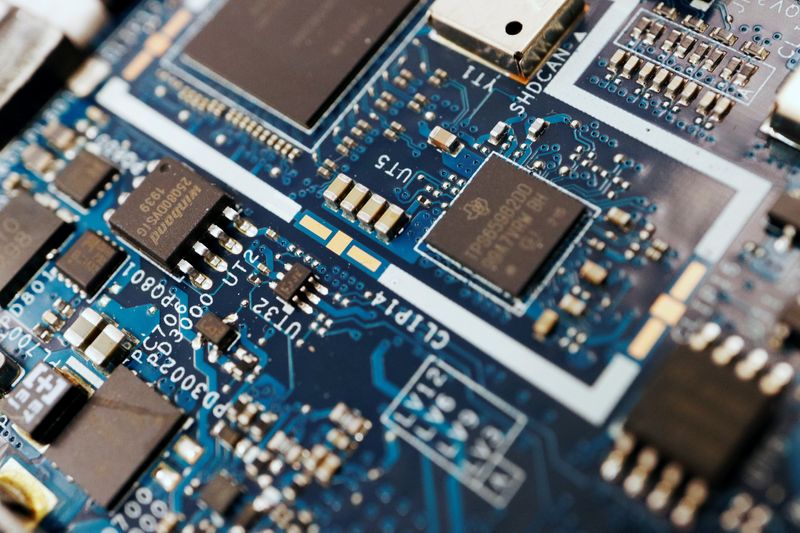Investing.com -- Bank of America (BofA) voiced a cautious stance on US semiconductor stocks, citing a combination of slow industrial and automotive demand, along with tensions from the China trade war.
In a Tuesday report, the firm highlighted the recent guidance cut from Microchip Technology (NASDAQ:MCHP) on December 2, as well as mixed sentiments at the Consumer Electronics Show (CES) from various management teams, including Analog Devices (NASDAQ:ADI), Texas Instruments (NASDAQ:TXN), and ON Semiconductor (NASDAQ:ON).
BofA also flagged concerns about the sustainability of demand from China, with companies like ON and NXP Semiconductors NV (NASDAQ:NXPI) being most exposed to potential demand fluctuations.
Additionally, there is scrutiny over pricing tactics by US vendors, with ADI and TXN under investigation.
With consensus sales down 9% quarter-over-quarter, BofA analysts expect the semiconductor companies’ Q4 results to be at least in line with expectations, however, there are downside risks, particularly for MCHP and ON.
The analysts expect sub-seasonal trends to continue until the second half of 2025, suggesting that it may be the “right timing for a rotation into cyclicals.”
Analysts led by Vivek Arya favor ON and NXPI for their valuation and leverage to long-term electric vehicle (EV)/Advanced Driver-Assistance Systems (ADAS) content drivers, and ADI for its high-end portfolio and potential for high free cash flow (FCF) margins in the next upcycle.
In the note, the firm also pointed out a divergence in growth forecasts for automotive and industrial semiconductor companies for the calendar year 2025.
While consensus estimates are banking on a strong second-half weighted growth, BofA believes this is unlikely and expects estimates to trend downwards.
“As such, we suspect estimates could reduce towards down -3% to flat YoY for Auto names and up +5-7% YoY for Industrials,” analysts highlighted.
Moreover, they flagged China as an emerging risk, with its growing capability in trailing-edge technology potentially leading to increased competition and lower prices.
In terms of demand, the automotive sector is still struggling to find a bottom, with recent S&P forecasts for global light vehicle production being revised downwards.
The industrial sector is also experiencing weakness, which is expected to persist through the first half of 2025.
BofA emphasizes that a rebound in the US and Europe is crucial for a broader recovery, but notes that recent improvements in Purchasing Managers' Indexes (PMIs) might not be reliable indicators.
Lastly, the bank reflected on the growth drivers of the diversified semiconductor industry, noting that from 2009 to 2019, growth was primarily unit-driven, while from 2019 to 2024, elevated pricing was a significant factor. With the potential for pricing to revert to mean, unit sales may become more critical for future growth, analysts concluded.
